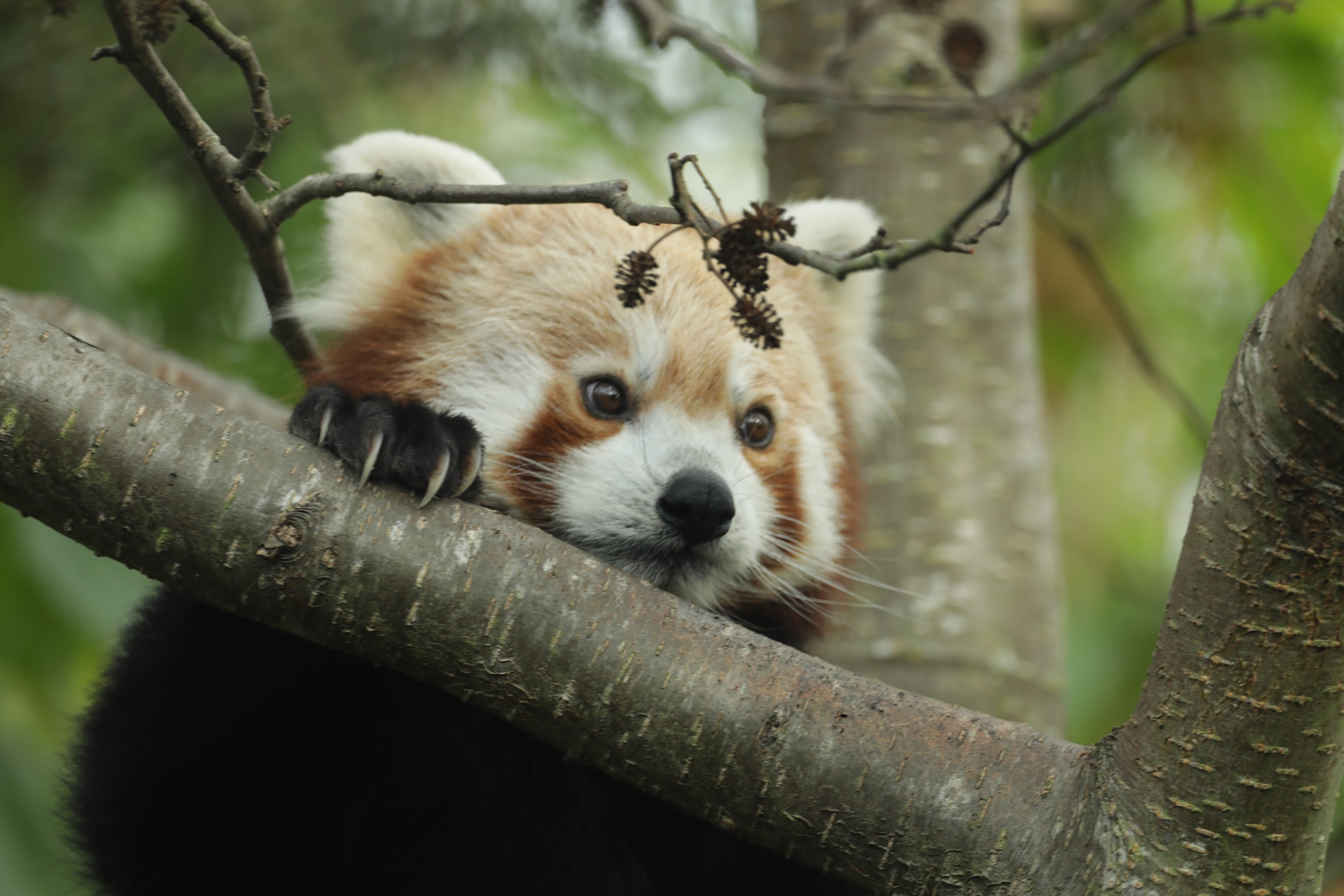Species spotlights | Pallas's cat
Posted 13 Dec 2022
/pallas_cat.jpg)
As a wildlife conservation charity, the Royal Zoological Society of Scotland (RZSS) recognises that it is important to protect species of all shapes and sizes and that species protection alone means nothing without protecting their habitats too.
Species depend on habitats, and together they form our planet’s essential ecosystems – both habitats and species must function in harmony to create a sustainable, abundant and diverse life on earth.
Recovery efforts need to be truly collaborative, both for species and habitat, and between organisations, governments, and communities. Only together can we create a world where nature is protected, valued and loved.
During the UN Biodiversity Conference (COP15), we will be speaking with our conservation partners around the world, to discover more about the species they are working to protect.
Christine and Urs Breitenmoser, Co-chairs of the IUCN Cat Specialist Group

Christine and Urs Breitenmoser are the co-chair team of the IUCN Species Survival Commission Cat Specialist Group. RZSS has collaborated with Urs and Christine on the conservation of small cats for many years, including through the production of the status reviews for Pallas’s cats and wildcats. Most recently Christine and Urs are assisting the RZSS-led Saving Wildcat partnership as advisors.
As the chairs of the IUCN Species Survival Commission Cat Specialist group, would you be able to explain why is it important to protect cat species?
Globally, many cat species are threatened with extinction. They are important animals within their natural ecosystems and are also just incredibly fascinating and wonderful!
Cats are, across nature, the most specialised terrestrial predators. They are at the top of their respective food chains as hunters and carnivores, living mostly a solitary life (with some exceptions) and consequently at low densities.
This makes them very dependent on their typical prey and their preferred habitats – and so incredibly vulnerable to any drop in prey numbers or habitat destruction.
As hunters, they show a very distinct and adaptable behaviour. Their individual cleverness, combined with their elegance (and looks ranging from cute to majestic), make them so appealing to humans. Because of this, cats are the perfect ambassadors for nature conservation.
Conservation work is often centred around species that are under threat, so why is it important to conduct monitoring and research on species like the Pallas’s cat, that was recently down listed from near threatened to least concern by the IUCN Species Survival Commission?
The IUCN Red List of Threatened Species applies a hierarchical system of seven categories, from ‘Least Concern’ to ‘Extinct in the Wild’. Up listing to a higher category indicates a more alarming conservation status. This is done according to rigorous rules and parameters, such as distribution area, fragmentation, population size and trend. In turn, down listing to a lower category can be used as a tool to define concrete conservation goals and develop conservation strategies.
Both up listing and down listing require robust information on the status of the species, which can only be gained through thorough surveys and consistent monitoring.
Monitoring elusive and rare animals like Pallas’s cat is a challenge, but modern tools such as molecular-genetic analyses or automatic cameras have brought a huge amount of progress in recent times.
The Pallas’s cat is an icon of the steppe habitats of northern Asia. It depends on medium-sized prey such as picas, marmots and larger rodents. These prey populations fluctuate in time, and the steppe as the prime habitat is under pressure from overgrazing through livestock, infrastructure development and climate change. We do not understand the Pallas’s cat’s population dynamic, and it is hence very important to establish a reliable monitoring for the species, even though we presently do not consider it threatened.
Do you see the conservation of cat species having positive impact on other species?
Cat species are often referred to as 'umbrella species'. This means if that species is protected, their entire living space, including habitats and prey, will be protected too. Larger species, like cats, need lots of habitat, and truly seeing to their needs means that isolated pockets of habitat must be reconnected and wide-ranging threats, like those from pollution and climate change, must be alleviated. By focusing on umbrella species, we can drive wider change at an ecosystem scale.
By representing certain typical habitats, cats are also frequently used as flagship species. A flagship species acts as an ambassador for conservation or protection of a particular landscape – think lions and Africa’s savannahs or wildcats and the Scottish Highlands!
What are the key measures required for the conservation of cat species?
There are 40 cat species, from the tiny sand cat to the majestic Amur tiger, found in extremely varied habitats and countries around the world. They face many specific threats depending on the habitat and climate they live in, and the human society they encounter.
However, three categories of challenges are common to all of them: habitat deterioration, prey depletion and human conflict.
Habitats are not only threatened by over-exploitation and human encroachment, but increasingly by climate change. As a result of this habitat shrinkage or alteration, prey becomes scarce, leading to higher competition for food sources.
Over the centuries, cats have been persecuted for various reasons, most often as potential attackers of livestock.
To protect cat species, these threats must be mitigated. In some cases, it is enough to adjust the law to protect cats, but most often, their conservation includes protection or recovery of habitats, enhancement of the prey population and mitigation of conflicts with humans. In very small cat populations, it is vital to ensure genetic diversity to prevent the negative consequences of inbreeding.
So, a typical cat conservation project usually requires several measures, at different levels. Cat conservation is just like living in New York: If you can make it there you can make it anywhere…
/pallas_cat_2_jp.jpg)
Now is the time
With more than a million species at risk of extinction, our planet’s life support system is in crisis and the time to act is now. RZSS has pledged to reverse the decline of at least 50 species by 2030, from wildcats in Scotland, to chimpanzees in Uganda.
Together, we can help create a world where nature is protected, valued and loved.
Find out more about our wildlife conservation charity’s 2030 strategy by visiting rzss.org.uk/about.
Discover more species spotlights:

